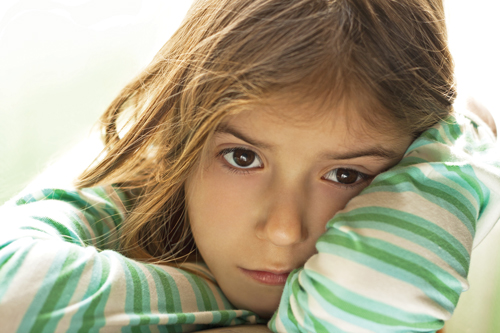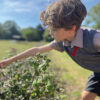by Clare Eddison
The Dharma Primary School
“There is no end to education. It is not that you read a book, pass an examination, and finish with education. The whole of life, from the moment you are born to the moment you die, is a process of learning.”
Krishnamurti
“There is no end to education. It is not that you read a book, pass an examination, and finish with education. The whole of life, from the moment you are born to the moment you die, is a process of learning.”
Krishnamurti
Children spend most of their childhood at school, (from nursery, primary, through to secondary and beyond) and all the time they are growing up. As parents and carers, we can ask ourselves: “What skills will our children need for this journey and what will help them become successful and happy in their lives?” In these times, we also ask how we can ensure our children are healthy and protected from risks and threats that we perceive and read about, for instance with regard to the internet and screens. Many well-researched articles focus on the declining mental and physical health of our children – it is part of the zeitgeist. How will our children fare when they are older?
It is also true that all children and young people experience powerful anxiety, confusion, distress and rage at points.
Living in a family, making relationships with peers and making mental connections in order to learn are emotional matters. Experiences of disappointment and frustration, at ordinary levels, are as important as achievement and satisfaction.
We want to keep distressing feelings at manageable levels for our children and for most of the time. At the extreme end, it is thought that, in response to prolonged exposure to deprivation or threat, the neurological development of a child’s brain becomes distorted such that the ‘survival’ mechanisms of the brain and body are more dominant than the ‘learning’ mechanisms. This results in wide-ranging impairments in arousal, cognitive, emotional and social functioning.
Whilst this is not the norm, an awareness of the neurological plasticity can help us as parents and educators. There are many things that we can do to ‘future-proof’ our children and build resilience in the journey of growing up. I use the word ‘future-proof’ in this context to talk about the strategies, habits and dispositions we can nurture so that our children can continue to be successful in their future when, as it will, their situation changes.
Our approach at the school, which is universally applicable, is the systematic, consistent and gentle development of a relationship with one’s own mind and body. What follows are just some ideas: as an example, ‘future-proofing’ the body involves a wide awareness of ‘we are what we eat’. This leads to regular contemplations about how our food got to our plate, how our body uses food and a consideration of how much waste we generate. In turn, children’s awareness of their own agency in the world is expanded and deepened.
Here at school our bodies are future-proofed through dance classes, games, and mindful movements. The body-mind link is fostered by regular consideration of movement and stillness, silence and talking. We can include an attitude of care (‘what happens when my body is injured or hurts?’) and, powerfully, we can model the healthy care of our adult bodies through exemplification (for example, staff cycling in to work).
Future-proofing the minds of children is important to all of us. Again, mealtimes can be used as a fertile arena for the whole area of mindfulness. Put simply, mindfulness of eating is ‘just eating’, rather than thinking about other things or talking or watching TV whilst eating. Mindfulness is becoming interested in what is happening in the present moment, with an attitude of kind curiosity. We can use our senses of taste, touch, sight, hearing and smell to ground us in what is happening right now. Similarly, mindful walking is just walking and mindful breathing is just breathing. Children do develop the habit of switching into a more mindful state and are able to use it in times of stress or worry, to zoom out of the sense of tightness that these emotions create.
Why not try it now? See how it feels.
Future-proofing the mind, inclining it to happiness and kindness is something to be practised and there are beautiful, ancient techniques (for instance, ‘loving kindness’ meditation) that can be adjusted to be age-appropriate for all. As another example, recent research reports that gratitude is key to well-being. Gently but consistently making a sense of gratitude part of our everyday conversation will have long-term benefits.
Finally, I would like emphasise play as a sure-fire method of future-proofing. Yes, play! Even older children need to play much more than we realise. Play is one way children explore, try to make sense of and communicate their emotional life. The ability to play also affects neurological development, improving imagination, digital protection, resilience and wellbeing.
The Dharma Primary School, in Brighton, is a non-selective independent school with a philosophy rooted in Buddhist principles.
This year they celebrate their 25th anniversary. Through the practice of mindfulness, the school aims to cultivate wisdom, reflection and compassion in children and to help them unlock their full potential. The Dharma Primary School is a winner of the Independent Schools Association (ISA) AWARD FOR EXCELLENCE & INNOVATION IN PUPILS’ MENTAL HEALTH & WELLBEING.
For more information please go to:
www.dharmaschool.co.uk.




 scussing the news might not be a part of everyday conversations. The increased use of technology might mean there are fewer opportunities for having a chat and as a lot of the news can be quite negative, many parents may want to shield and protect their children from it.
scussing the news might not be a part of everyday conversations. The increased use of technology might mean there are fewer opportunities for having a chat and as a lot of the news can be quite negative, many parents may want to shield and protect their children from it.









